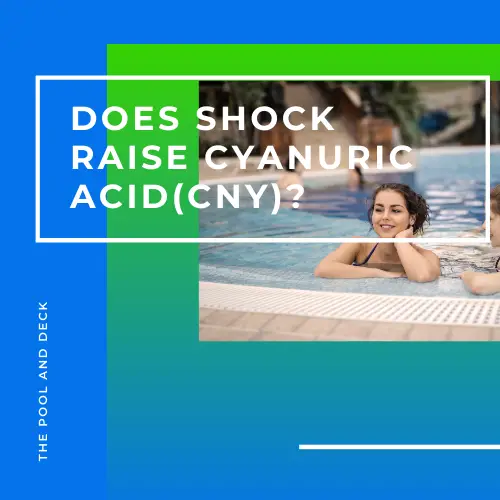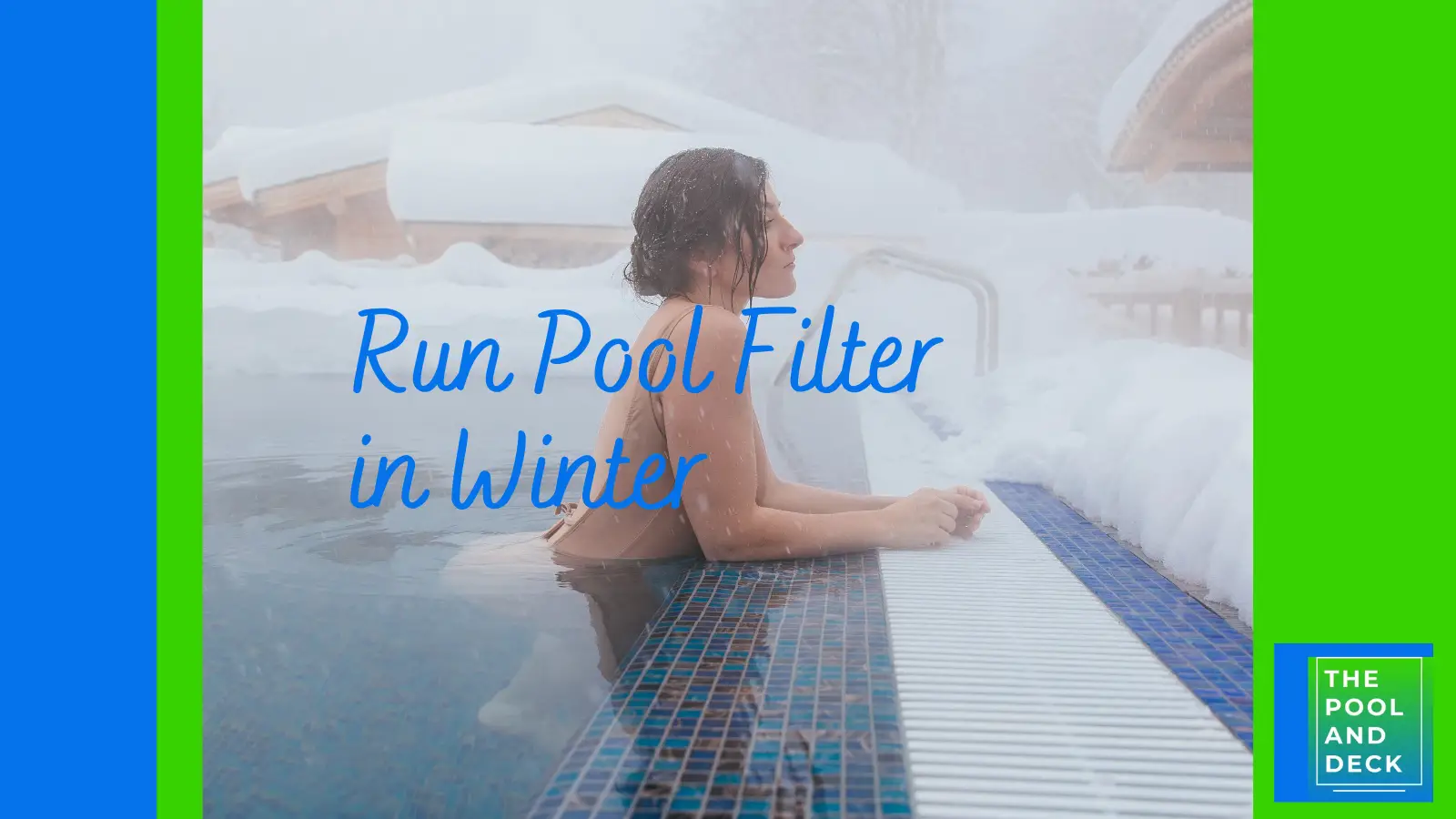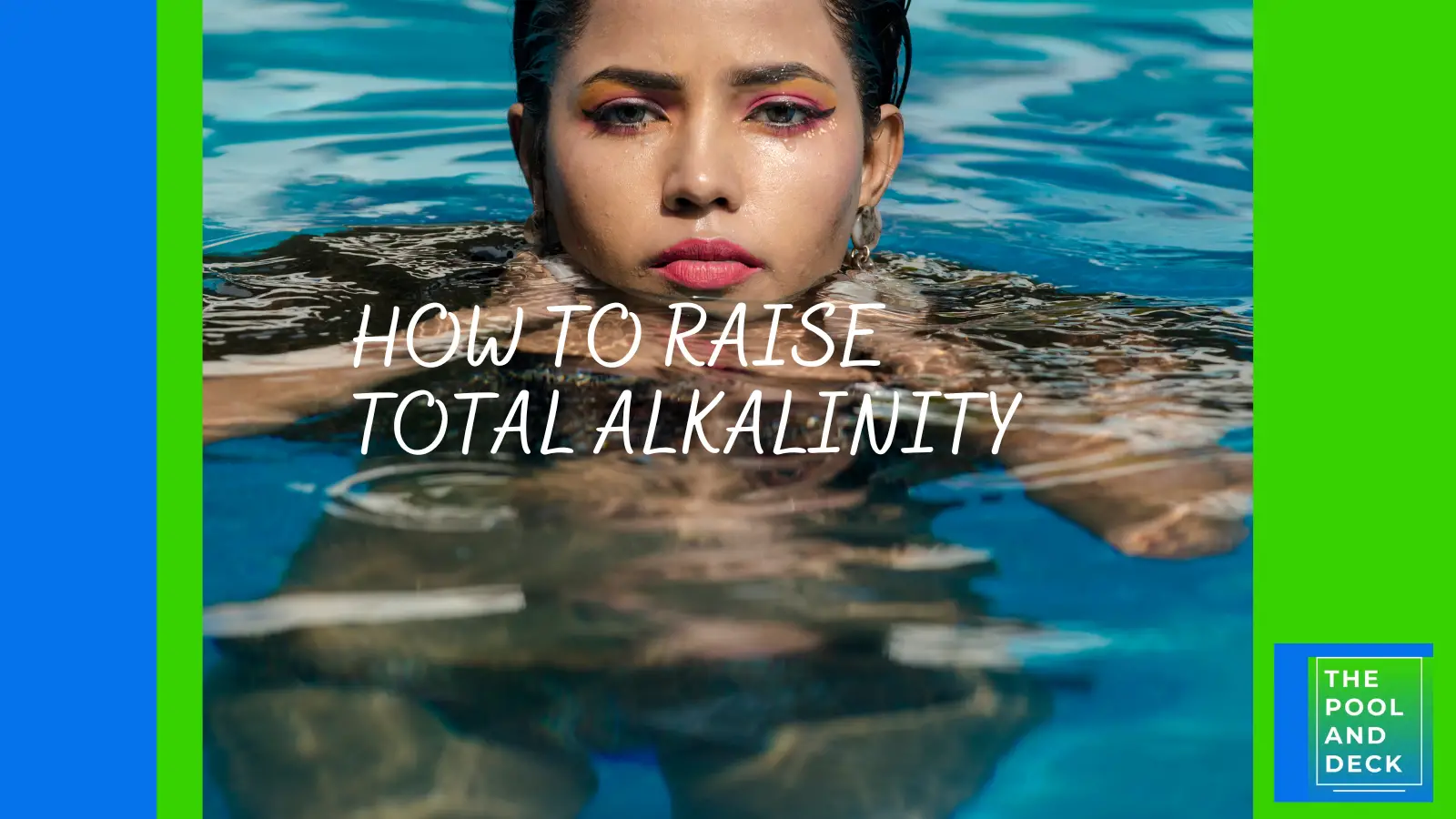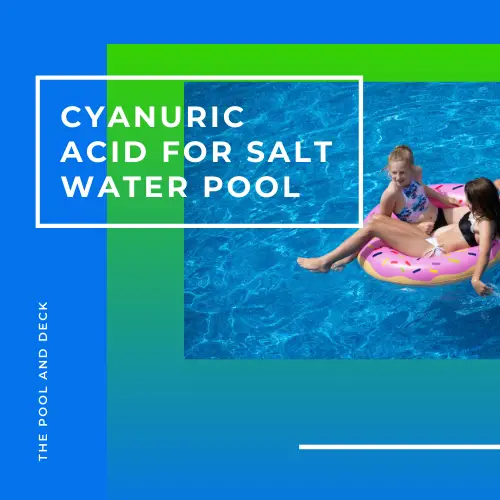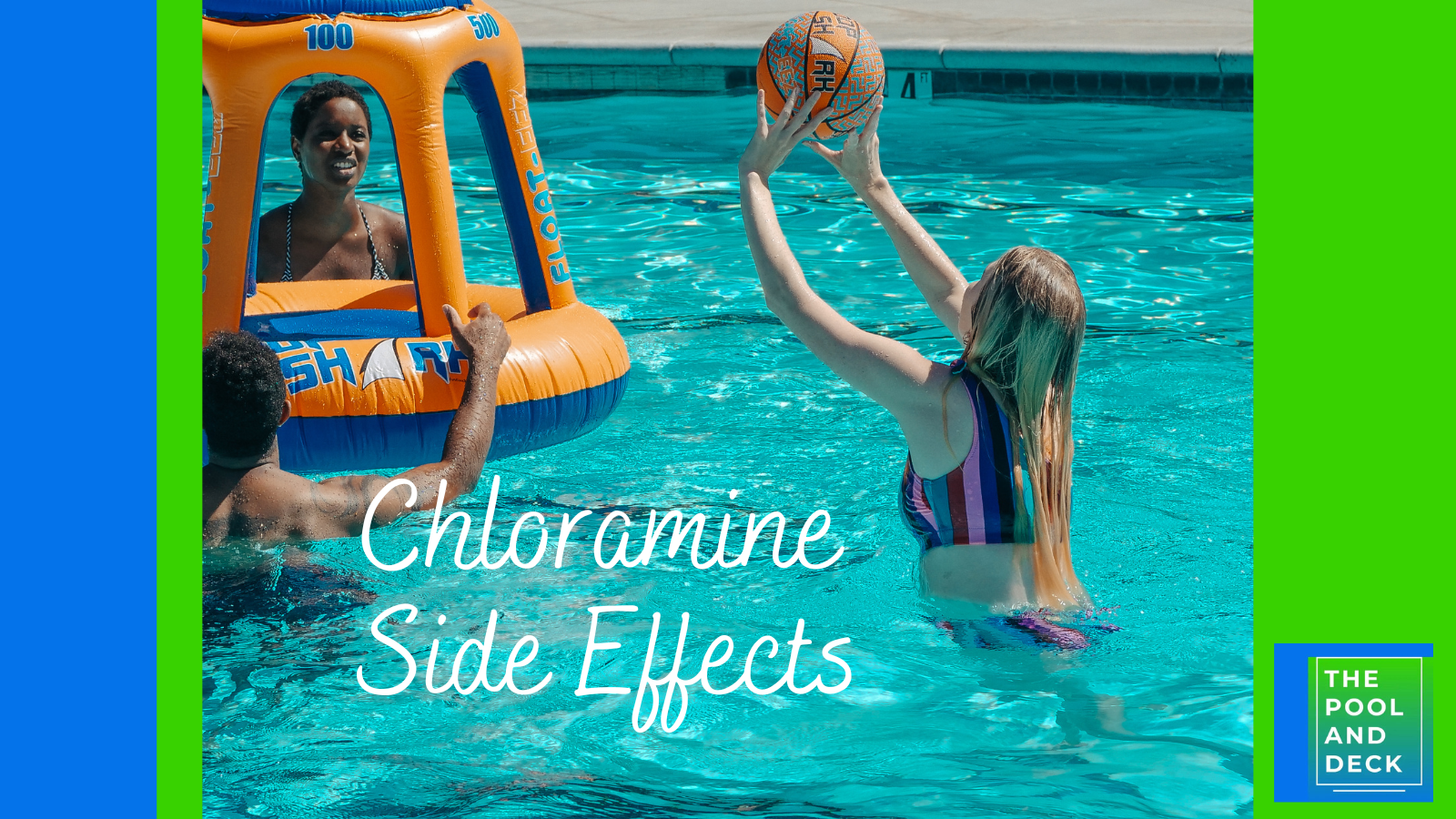Free Chlorine is High: Causes, Effects & Easy Fixes
As an Amazon Associate, I earn from qualifying purchases.
Chlorine, especially Free Chlorine is what keeps your pool sanitized and safe. However, when Free Chlorine is High, it is not a good thing!
In this article, I explain the causes and effects of high free chlorine levels in your pool. I shall also cover essential tips for lowering free chlorine in a pool and preventing it from rising again.
Key Takeaways
- Test pool water regularly to monitor free chlorine levels.
- Avoid over-dosing chlorine or excessive use of pool shock.
- Use chlorine neutralizers like sodium thiosulfate for quick corrections.
- Maintain balanced cyanuric acid levels to prevent chlorine lock.
- Natural methods like sunlight and aeration can lower chlorine over time.
- Keep pH and alkalinity balanced for effective sanitization.
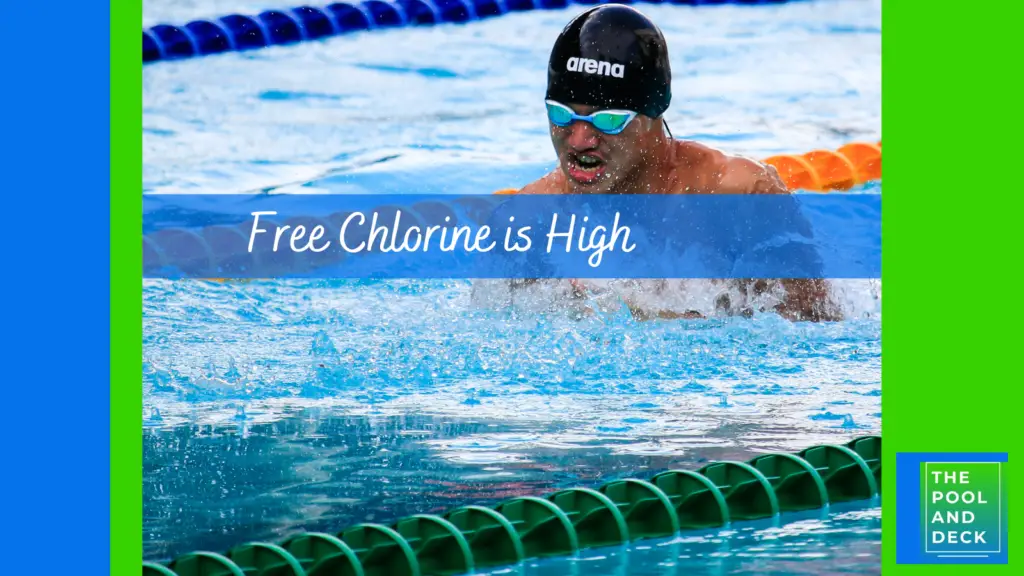
Table of Contents
What is Free Chlorine?
Free chlorine is the amount of chlorine in your pool that is available to sanitize pool water. It’s the active, usable part of chlorine that can combine with bacteria and other contaminants and neutralize them.
Maintaining the recommended level of free chlorine is essential for pool hygiene and swimmer safety. The recommended and safe level for free chlorine is 2 – 4 ppm.
For more information please check out What Is Free Chlorine in a Pool? Short & Easy to Understand Guide
What is High Free Chlorine?
The recommended and safe level for Free Chlorine is 2 – 4 ppm. Free Chlorine is high when the level exceeds 5 ppm and dangerously high when the level exceeds 7 – 8 ppm.
Free Chlorine levels of 2 – 4 ppm are high enough to kill pathogens such as bacteria and algae and yet low enough for swimmer comfort.
When the free chlorine level is higher than 5 ppm swimmers may start to get red eyes, itching skin and stiff hair after a swim.
Swimming should not be permitted in the pool if the free chlorine level exceeds 7 – 8 ppm as it could be hazardous to swimmers’ health.
Chlorine levels must be brought down below 5 ppm, before the pool can be reopened for swimming.
For more information, read Pool Chemistry for Beginners: With 5 Super Helpful Cheat Sheets!
Why Is My Free Chlorine Level High?
High free chlorine levels in your pool can result from:

Over-Chlorination: Adding Too Much Chlorine
Adding excessive chlorine is a common cause of high free chlorine levels. This often occurs due to:
- Pool Shocking: Shock, naturally results in high free chlorine levels. You need to wait for the pool shocking process to run its course.
- Routine Maintenance Errors: Accidental overdosing during regular sanitization.
- Low Pool Usage: Lower levels of contaminants require lower chlorine dosage. However, when the dosage is not adjusted based on the lower chlorine demand, free chlorine levels can rise.
- Lack of Testing: Skipping daily or alternate-day testing may result in unintentional overdosing.
High Cyanuric Acid Levels: Locking Up Chlorine
Cyanuric acid, also known as pool stabilizer, helps protect chlorine from sunlight. However, excessive levels (above 50 ppm) can bind chlorine, reducing its effectiveness.
This “chlorine lock” causes high free chlorine readings while diminishing its sanitizing power. Regularly test cyanuric acid levels to keep them within the ideal range of 30-50 ppm.
Environmental Factors: Sunlight, Rainfall, and Temperature
- Sunlight: UV rays naturally degrade chlorine. Overcompensating with additional chlorine can lead to high free chlorine levels.
- Shaded Pools: Reduced UV exposure slows chlorine breakdown, leading to higher levels over time.
- Rainfall: Rain dilutes chemicals and introduces debris, often causing uneven adjustments.
- Temperature:
- Warm Weather: Accelerates chlorine consumption, often leading to overapplication.
- Cold Weather: Slows chlorine dissipation, reducing usage and causing accumulation.
Water Chemistry: pH Levels and Chemical Balance
- Low pH Levels: Chlorine becomes more effective at lower pH, potentially increasing free chlorine concentration.
- Chemical Interactions: Imbalances, such as excessive cyanuric acid, can make free chlorine less available for sanitization, leading to misleadingly high readings.
Risks of High Free Chlorine Levels
While chlorine is essential for pool sanitation, having high free chlorine levels is not desirable as it creates problems for swimmers as well as pool equipment.

Let’s look at some of the main risks:
Health Concerns: Skin Irritation, Eye Problems, etc.
Exposure to high chlorine levels can cause discomfort for swimmers. Common symptoms include:
- Skin irritation: Dry, itchy, or red skin is a typical sign of excessive chlorine.
- Eye problems: Red, burning, or watery eyes can occur when chlorine is too concentrated.
- Respiratory issues: Strong chlorine smell and fumes from over-chlorination can irritate the respiratory system, especially for people with asthma or allergies.
To ensure swimming pool health, always test chlorine levels before swimming and adjust as needed.
Damage to Pool Equipment: Corrosion and Degradation
High chlorine levels can damage your pool’s components over time.
- Metal parts: Excess chlorine corrodes metal parts like ladders, rails, and screws, leading to rust and weakening.
- Pool liners and covers: Prolonged exposure to high chlorine can cause discoloration and wear on vinyl liners and plastic covers.
- Filters and pumps: Chlorine overuse may degrade internal seals and other equipment parts, leading to costly repairs.
Pool Water Chemistry
High chlorine levels result in less than optimal pool water quality. Specifically:
- pH Levels: High free chlorine levels can cause the pH of your pool water to rise, making it more alkaline. This can lead to scaling and cloudiness in the water.
- Total Alkalinity: High free chlorine can also affect the total alkalinity of your pool, which can cause fluctuations in pH levels and make it harder to balance your pool’s chemistry.
- Calcium Hardness: Excessive free chlorine can cause calcium to precipitate out of the water, leading to an increase in calcium hardness. This can result in scaling and damage to pool surfaces and equipment.
- Cyanuric Acid Levels: High free chlorine levels can cause a decrease in cyanuric acid levels, which can make your chlorine less effective and cause it to dissipate more quickly under sunlight.
- Total Dissolved Solids (TDS): High free chlorine levels can contribute to an increase in TDS, which can lead to cloudy water, scaling, and a decrease in the effectiveness of your pool chemicals.
Proper pool maintenance includes keeping free chlorine residual within the recommended range of 1-3 ppm to avoid these issues.
How to Test for Free Chlorine
High or low levels of free chlorine can disrupt pool water chemistry, leading to ineffective sanitation, swimmer discomfort, and equipment damage.
Regular testing is the only way to manage free chlorine within the ideal range of 1–3 ppm (parts per million) for free chlorine residual.
Methods for Testing Free Chlorine
- Test Strips
- How it works: Dip a test strip into your pool water and match the resulting color to a chart provided with the strips.
- Benefits: Quick, affordable, and easy for beginners.
- Limitations: Less precise than other methods, with results presented in general ranges.
- Liquid Test Kits
- How it works: Collect a water sample and add a reagent (liquid chemical) that changes color based on the chlorine level. Compare the color to a chart for an accurate reading.
- Benefits: More precise than test strips and suitable for regular testing.
- Limitations: Requires careful measurement and handling of reagents.
- Digital Testers
- How it works: Use an electronic device to measure free chlorine levels directly. Simply collect a sample and insert it into the device.
- Benefits: Highly accurate and easy to use, providing exact ppm values.
- Limitations: More expensive than test strips or kits and requires battery power.
How Often Should You Test?
- Daily: During peak swimming season or when using the pool frequently.
- 2–3 times a week: For regular maintenance when the pool is used less often.
- After chemical adjustments: Always test after adding chemicals to ensure the desired balance is achieved.
Recommended Chemical Test Kit
Taylor K-2005 Complete DPD 9-in-1 Test Kit
Tests for free & total chlorine, bromine, pH, total alkalinity, total hardness, and cyanuric acid (CYA) levels.
Testing your pool regularly not only helps manage free chlorine levels but also ensures other chemical levels, like pH and cyanuric acid, are balanced.
How to Lower Free Chlorine Levels
If your pool has high free chlorine levels, don’t panic!
The first thing to do is to stop adding anymore chlorine to the pool (take out the unconsumed Trichlor tablets).
There are effective ways to bring the levels back to normal. Depending on the severity, you can use natural methods or chemical treatments.
Natural Methods: Sunlight, Aeration, and Partial Draining
Actually, sun and time are free and the most effective way of lowering free chlorine in a pool.
- Sunlight: Direct sunlight naturally breaks down chlorine. Let your pool sit uncovered during sunny hours to reduce chlorine levels. However, this method may not work well if your cyanuric acid levels are already high, as it slows chlorine breakdown.
- Aeration: Running water features like fountains or jets increases oxygen exposure, speeding up chlorine dissipation.
- Partial draining: If levels are extremely high, drain a portion of your pool and refill with fresh water. This dilutes chlorine concentration.
These methods are effective but take time. For quick results use one of the chlorine neutralizing chemicals described below.
Chemical Treatments: Using Chlorine Neutralizer
Using a chlorine neutralizer is the quickest way to reduce free chlorine levels.
Add Sodium Thiosulfate for Instant Reduction
Sodium thiosulfate, often referred to as a chlorine neutralizer, is one of the most popular options for lowering chlorine quickly.
- How it works: Sodium thiosulfate reacts with chlorine in the water, neutralizing it instantly.
- How to use: Carefully measure the dosage based on your pool size. Typically, 1 ounce reduces chlorine by 1 ppm in 10,000 gallons of water.
- Benefits: Fast-acting and widely available.
Be cautious not to overuse sodium thiosulfate, as it can cause chlorine levels to drop too low, requiring you to re-balance the pool.
Add Ascorbic Acid (Vitamin C) to Remove Chlorine
Ascorbic acid, or Vitamin C, is another effective option for neutralizing chlorine.
- How it works: Ascorbic acid reduces chlorine levels by chemically converting it into a harmless form.
- How to use: Dissolve ascorbic acid in a bucket of pool water, then add it to the pool while circulating the water. Check chlorine levels after a few hours and repeat if necessary.
- Benefits: Gentle on pool surfaces and safe for swimmers.
Ascorbic acid is a natural alternative that works well in small to moderate chlorine reductions.
Add Hydrogen Peroxide to Break Down Chlorine
Hydrogen peroxide (H2O2) can also be used to neutralize chlorine, especially in pools with non-chlorine sanitizing systems.
- How it works: Hydrogen peroxide reacts with chlorine to produce water and oxygen, effectively removing chlorine from the water.
- How to use: Use a product labeled specifically for pool use. Add the recommended dosage to the pool and allow time for the reaction to take place.
- Benefits: Dual-purpose, as it also improves water clarity by oxidizing organic matter.
Hydrogen peroxide is ideal for pools with high chlorine levels that need quick reduction, but it may require adjustments to pH levels afterward.
Adjusting Chlorine Stabilizer Levels
If your pool stabilizer (cyanuric acid) levels are too high, your chlorine may remain “locked” and ineffective. Here’s how to adjust:
- Test your cyanuric acid levels. Ideally, they should be between 30-50 ppm.
- If levels are high, partially drain and refill the pool to dilute the stabilizer concentration.
Balancing cyanuric acid ensures that chlorine works efficiently without excessive buildup.
Preventing High Free Chlorine Levels
Preventing high free chlorine levels is easier and more cost-effective than correcting them. Here is what you can do to keep your pool safe, balanced, and enjoyable.
Regular Pool Water Testing
Frequent testing of your pool water is the cornerstone of effective maintenance.
- Use test strips, liquid kits, or digital testers to monitor free chlorine residual levels.
- Don’t forget to check related factors like pH, cyanuric acid, and combined chlorine (chloramines) for a comprehensive understanding of your pool water chemistry.
- Schedule tests: Daily during heavy usage and 2–3 times a week during lighter usage.
Consistent testing helps you catch issues early and avoid over-chlorination.
Accurate Chlorine Dosing
Accurate dosing prevents the risk of both high chlorine levels and insufficient sanitation.
- Follow guidelines: Always refer to manufacturer recommendations for dosing based on your pool’s size and water volume.
- Measure carefully: Use a pool calculator to ensure you’re adding just the right amount of chlorine.
Maintaining Balanced Water Chemistry
Balanced water chemistry ensures that your pool stays clean without chemical imbalances.
- pH and alkalinity: Keep pH levels between 7.2 and 7.8, and total alkalinity between 80–120 ppm. Maintaining pH and alkalinity within the recommended range ensures optimal chlorine levels as the chlorine works most effectively.
- Cyanuric acid: Maintain stabilizer levels between 30–50 ppm to protect chlorine from sunlight while preventing chlorine lock.
- Chlorine stabilizer management: Use stabilizers sparingly and adjust through partial draining if levels become too high.
- Pool Circulation: Ensure your pool’s circulation system is working properly. Good circulation helps distribute the chlorine evenly throughout the pool.
By balancing all aspects of your pool’s chemistry, you can maintain effective sanitation while avoiding high free chlorine symptoms like strong chlorine smells or swimmer discomfort.
Frequently Asked Questions (FAQs)
How often should I shock my pool?
Shock your pool every week during the pool season when usage is high. Shock also when you notice cloudy water or algae growth.
Can high chlorine levels cause a chlorine smell?
Yes. However, the strong chlorine smell comes from chloramines, not free chlorine.
What is combined chlorine, and how do I remove it?
Combined chlorine (chloramines) is inactive chlorine. Use breakpoint chlorination to eliminate it.
Can I use baking soda to lower chlorine levels?
No, baking soda is used to adjust alkalinity, not to lower chlorine. Use a chlorine neutralizer instead.
Thank you very much for reading the post. I do hope you found it informative and helpful.



